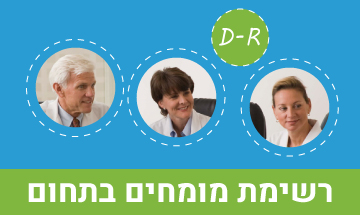The feasibility of convalescent plasma therapy in severe COVID-19 patients: a pilot study
Abstract
Currently, there are no approved specific antiviral agents for 2019 novel coronavirus disease (COVID-19). In this study, ten severe patients confirmed by real-time viral RNA test were enrolled prospectively. One dose of 200 mL convalescent plasma (CP) derived from recently recovered donors with the neutralizing antibody titers above 1:640 was transfused to the patients as an addition to maximal supportive care and antiviral agents. The primary endpoint was the safety of CP transfusion. The second endpoints were the improvement of clinical symptoms and laboratory parameters within 3 days after CP transfusion. The median time from onset of illness to CP transfusion was 16.5 days. After CP transfusion, the level of neutralizing antibody increased rapidly up to 1:640 in five cases, while that of the other four cases maintained at a high level (1:640). The clinical symptoms were significantly improved along with increase of oxyhemoglobin saturation within 3 days. Several parameters tended to improve as compared to pre-transfusion, including increased lymphocyte counts (0.65*109/L vs. 0.76*109/L) and decreased C-reactive protein (55.98 mg/L vs. 18.13 mg/L). Radiological examinations showed varying degrees of absorption of lung lesionswithin 7 days. The viral load was undetectable after transfusion in seven patients who had previous viremia. No severe adverse effects were observed. This study showed CP therapy was welltolerated and could potentially improve the clinical outcomes through neutralizing viremia in severe COVID-19 cases. The optimal dose and time point, as well as the clinical benefit of CP therapy, needs further investigation in larger well-controlled trials.
Treatment of 5 Critically Ill Patients With COVID-19 With Convalescent Plasma
Key Points
Question Could administration of convalescent plasma transfusion be beneficial in the treatment of critically ill patients with coronavirus disease 2019 (COVID-19)?
Findings In this uncontrolled case series of 5 critically ill patients with COVID-19 and acute respiratory distress syndrome (ARDS), administration of convalescent plasma containing neutralizing antibody was followed by an improvement in clinical status.
Meaning These preliminary findings raise the possibility that convalescent plasma transfusion may be helpful in the treatment of critically ill patients with COVID-19 and ARDS, but this approach requires evaluation in randomized clinical trials.
Importance Coronavirus disease 2019 (COVID-19) is a pandemic with no specific therapeutic agents and substantial mortality. It is critical to find new treatments.
Objective To determine whether convalescent plasma transfusion may be beneficial in the treatment of critically ill patients with severe acute respiratory syndrome coronavirus 2 (SARS-CoV-2) infection.
Design, Setting, and Participants Case series of 5 critically ill patients with laboratory-confirmed COVID-19 and acute respiratory distress syndrome (ARDS) who met the following criteria: severe pneumonia with rapid progression and continuously high viral load despite antiviral treatment; Pao2/Fio2 <300; and mechanical ventilation. All 5 were treated with convalescent plasma transfusion. The study was conducted at the infectious disease department, Shenzhen Third People's Hospital in Shenzhen, China, from January 20, 2020, to March 25, 2020; final date of follow-up was March 25, 2020. Clinical outcomes were compared before and after convalescent plasma transfusion.
Exposures Patients received transfusion with convalescent plasma with a SARS-CoV-2–specific antibody (IgG) binding titer greater than 1:1000 (end point dilution titer, by enzyme-linked immunosorbent assay [ELISA]) and a neutralization titer greater than 40 (end point dilution titer) that had been obtained from 5 patients who recovered from COVID-19. Convalescent plasma was administered between 10 and 22 days after admission.
Main Outcomes and Measures Changes of body temperature, Sequential Organ Failure Assessment (SOFA) score (range 0-24, with higher scores indicating more severe illness), Pao2/Fio2, viral load, serum antibody titer, routine blood biochemical index, ARDS, and ventilatory and extracorporeal membrane oxygenation (ECMO) supports before and after convalescent plasma transfusion.
Results All 5 patients (age range, 36-65 years; 2 women) were receiving mechanical ventilation at the time of treatment and all had received antiviral agents and methylprednisolone. Following plasma transfusion, body temperature normalized within 3 days in 4 of 5 patients, the SOFA score decreased, and Pao2/Fio2 increased within 12 days (range, 172-276 before and 284-366 after). Viral loads also decreased and became negative within 12 days after the transfusion, and SARS-CoV-2–specific ELISA and neutralizing antibody titers increased following the transfusion (range, 40-60 before and 80-320 on day 7). ARDS resolved in 4 patients at 12 days after transfusion, and 3 patients were weaned from mechanical ventilation within 2 weeks of treatment. Of the 5 patients, 3 have been discharged from the hospital (length of stay: 53, 51, and 55 days), and 2 are in stable condition at 37 days after transfusion.
Conclusions and Relevance In this preliminary uncontrolled case series of 5 critically ill patients with COVID-19 and ARDS, administration of convalescent plasma containing neutralizing antibody was followed by improvement in their clinical status. The limited sample size and study design preclude a definitive statement about the potential effectiveness of this treatment, and these observations require evaluation in clinical trials.


